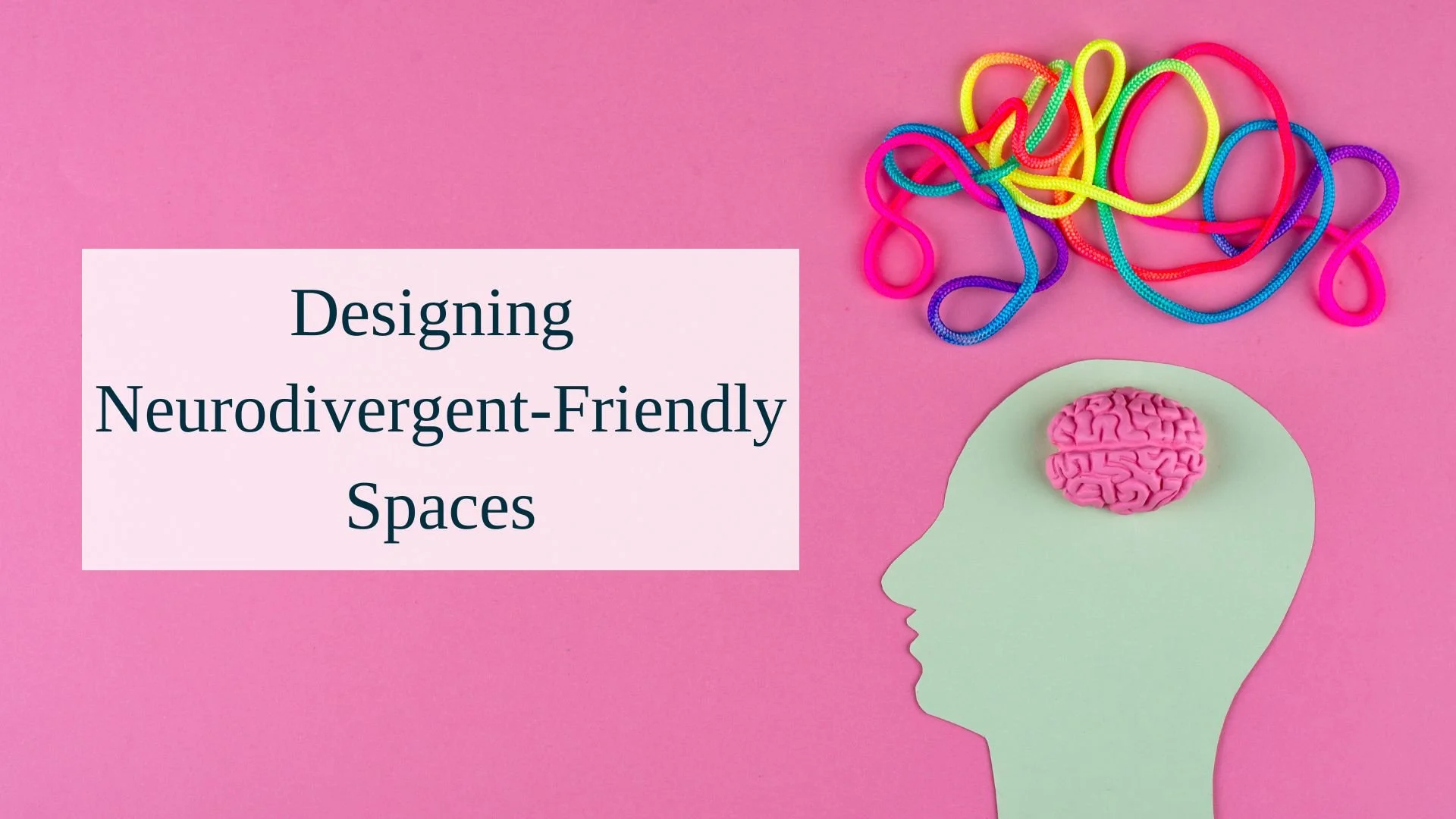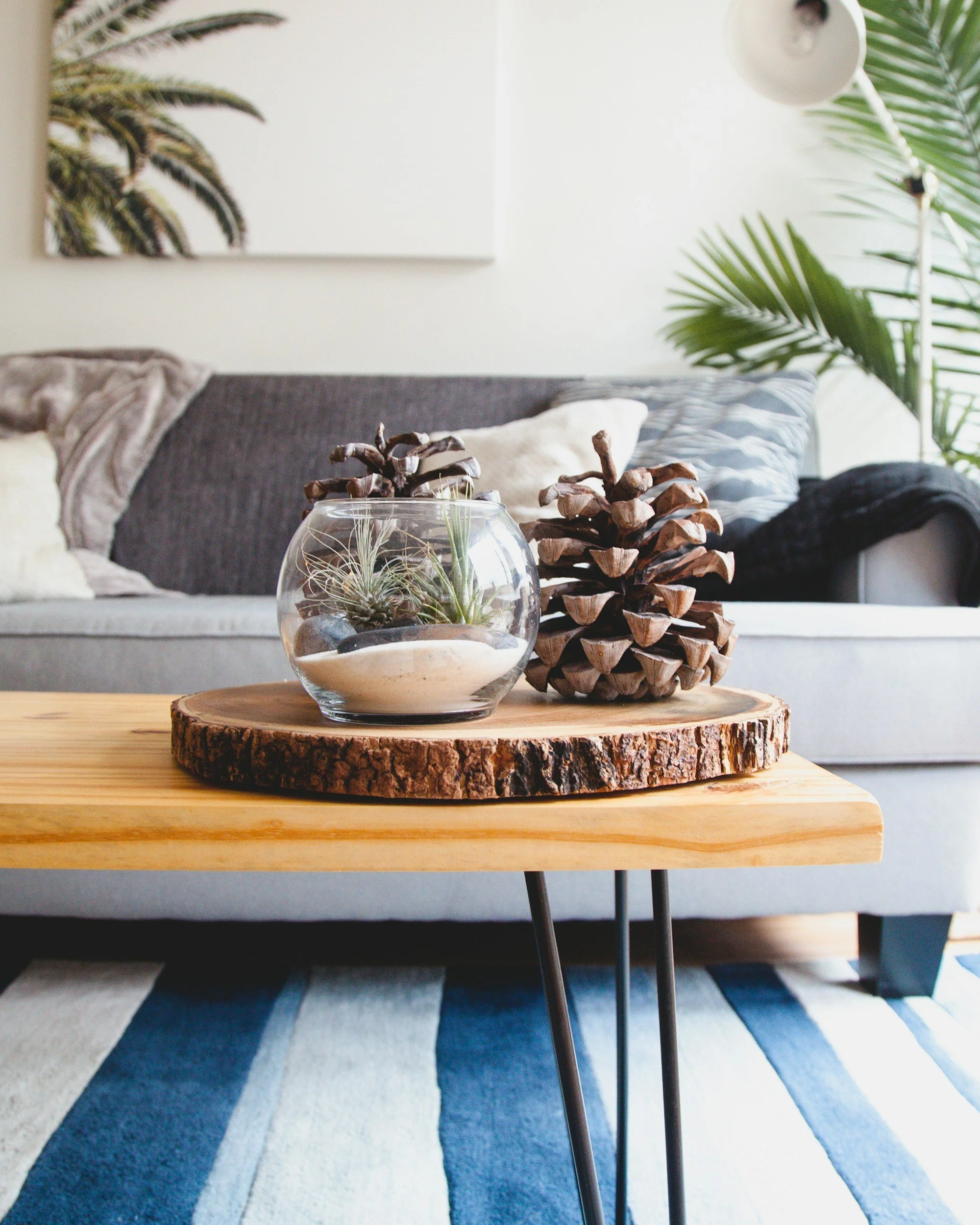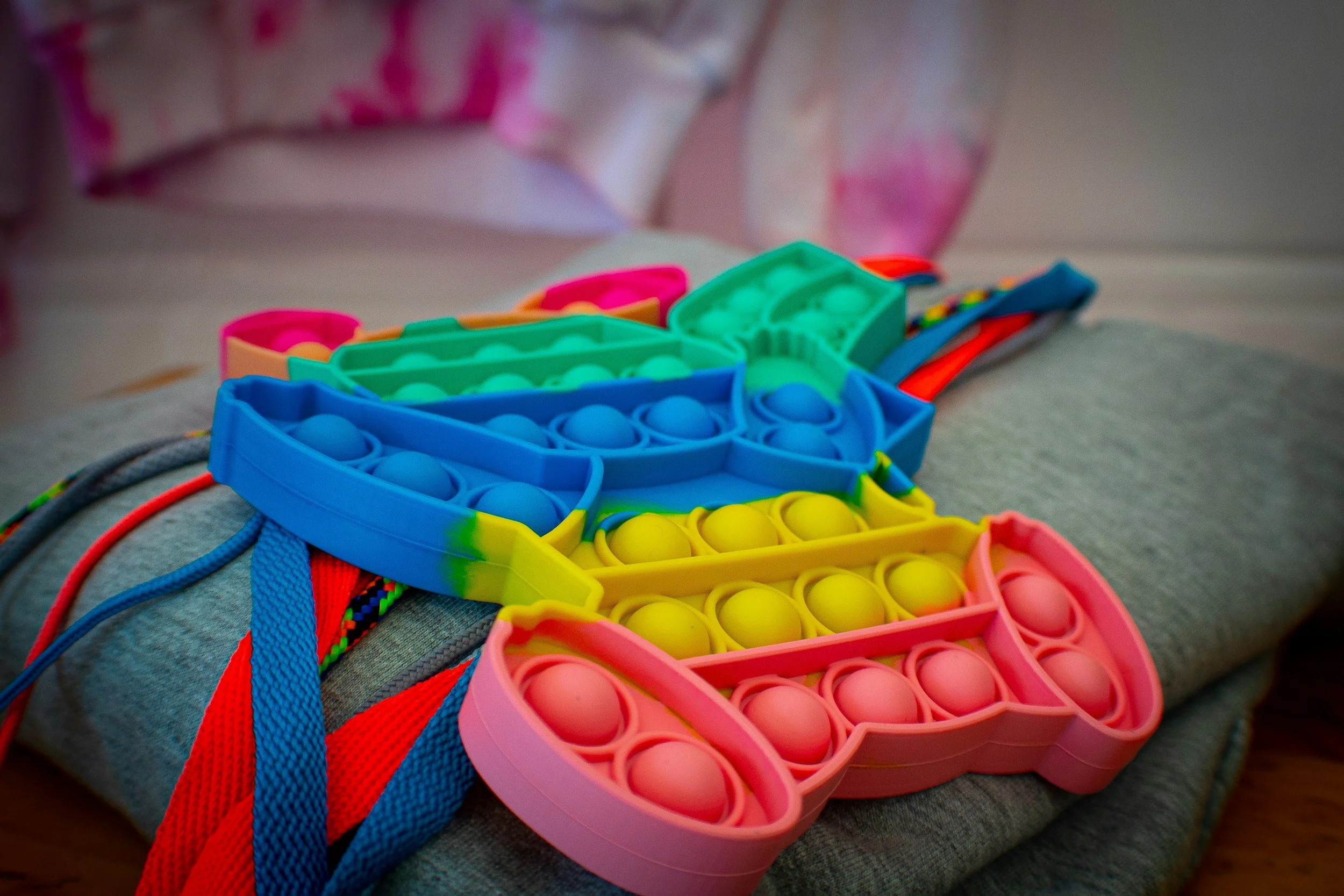Designing Neurodivergent-Friendly Spaces
In the UK, 15-20% of the population is neurodivergent, which equates to 13 million people. The chances are, we all share our workplaces and classrooms with neurodivergent individuals, we are also likely to have neurodivergent people amongst our friends and relatives.
Neurodivergence often affects how people process their physical environment, so the design of our homes, workplaces and public spaces can have a significant impact on the physical and psychological comfort of neurodivergent individuals. However, when we take steps to create a more neurodivergent-friendly environment this benefits EVERYONE, not just neurodivergent people.
In this blog post, I’ll explain some key principles for designing neurodivergent-friendly spaces and provide some tips for creating interiors that support neurodivergent people.
Understanding Neurodivergence
Neurodivergence refers to structured, consistent ways that brains work differently for some people than they do for most other people, common examples include Autism, ADHD, Dyslexia and Dyspraxia, but there is a whole spectrum of different neurotypes which affect the way people understand, interpret and interact with the world around them, in many different ways.
Sensory Design
Neurodivergent individuals often experience heightened or reduced sensitivity to sensory stimuli in their environment. Therefore, in order to create a neurodivergent-friendly space we need to consider the senses and how light, sound, texture, colours and scents will affect people using the space.
Lighting Tips:
Avoid fluorescent lights, which can flicker and strobe, causing discomfort and irritation.
Maximise natural light wherever possible, but include blinds or curtains to allow for light control and to prevent glare from direct sunlight.
Opt for soft, adjustable lighting such as warm LEDs or dimmable smart bulbs – this allows choice and flexibility for people to choose appropriate lighting to suit their mood or activity.
Noise Control:
Soft-close doors, cupboards, drawers, and toilet seats help to reduce noise and prevent sudden jarring sounds.
Soft furnishings such as carpets, rugs, curtains, and acoustic panels help to absorb sound and dampen down disruptive noise.
Pads on chair and table legs, coasters, table mats, and plants are simple additions that can help to improve acoustics and reduce unwanted noise in a space.
Texture Considerations:
In a workplace or community settings offer a variety of textures, such as soft/plush, rough, smooth, to account for different preferences.
In the home environment, textures can be selected to suit individual preferences for comfort or stimulation
Weighted blankets can help to provide grounding and comfort, helping people to decompress, regain focus, or sleep.
Natural materials such as wood, stone, wool and linen are great ways to incorporate texture into a space whilst also providing a connection to nature, which helps overall wellbeing.
Colour Selection:
In general, warm neutrals and soft blues and greens are calming and promote relaxation.
Bright and neon colours can be overstimulating and are usually best used in smaller quantities.
Colour perceptions and associations vary widely amongst us all so be mindful that colour psychology can only be considered a guide, and individual preferences should always be considered.
Scent Awareness:
Our sense of smell is deeply connected with our memory and individuals can be emotionally triggered in good and bad ways by scents
Neurodivergent individuals can be extremely sensitive to smells so consider the proximity of working and relaxing areas to kitchens and bathrooms.
Scented candles and diffusers can cause irritation and discomfort even if the intention is to enhance the scent in a space.
Make a space neurodivergent-friendly by maximising natural light, using muted colours, soft furnishings, and interesting textures. (Image credit: Dane Deaner via Unsplash)
Organisation and Clutter
Many neurodivergent people struggle with managing clutter and staying organised, leading to feelings of overwhelm. In addition, too much clutter can be overstimulating and cause visual stress making it difficult for people to relax.
Storage and organisation tips:
For some neurodivergent people, it can be difficult to remember items that are stored away where they cannot be seen, so open shelves with storage baskets, or clear storage containers, are more helpful than closed cupboards and drawers.
Labelling storage containers can help people to find items and know where to put them away.
Assigning a “home” for everything can help people to stay organised and avoid losing things, which helps to save time and reduce stress.
Open shelving with transparent, labelled storage containers can help neurodivergent individuals to remember where things are and stay organised. (Image credit: Heather McKean via Unsplash)
Relaxation:
Dedicating a room or space for neurodivergent people to retreat to when needed is a great way to make a building more inclusive and neurodivergent-friendly. Many people think of sensory rooms with coloured lights, bubble tubes and lava lamps but whilst some neurodivergent people will find such spaces beneficial, they aren’t right for everyone.
Neurodivergence can cause people to experience over-stimulation or under-stimulation, and the type of relaxation space required for each of these situations is different.
Spaces to support Over-Stimulation:
Over-stimulated individuals are often very sensitive to noise, light, and busy, crowded places. They are best served by a relaxation room that is calm, quiet, and soothing…
Muted colour schemes
Soft, low-level lighting
Soft furnishings and acoustic panels to reduce noise
Weighed blankets and comfortable furniture.
Spaces to support Under-stimulation:
Under-stimulated individuals are more likely to suffer from restlessness, boredom, and hyperactivity. They are best suited to a relaxation room that provides lots of opportunity for sensory stimulation…
Vibrant colour schemes
Interesting textures
Dynamic lighting which may be colourful or contain visually interesting elements such as bubble tubes and lava lamps
Movement-friendly furniture such as swing seats, rocking chairs, and balance balls
Fidget toys, percussion instruments, slime, and playdough can all help under-stimulated individuals to relax.
Fidget toys and interesting textures can help under-stimulated neurodivergent people to relax. (Image credit: Paola Andrea via Unsplash)
Key Takeaways:
There is no “one-size fits all” solution to designing neurodivergent-friendly spaces. Flexibility and choice such as adjustable lighting, moveable modular furniture, and different zones to suit different moods and activities, are key to creating a successful, supportive space.
Design for the senses and consider, vision, sound, touch and scents when choosing layouts, colour schemes, fixtures and fittings.
Consider the needs of over-stimulated individuals and under-stimulated individuals.
EVERYONE benefits from neurodivergent-friendly spaces, not just neurodivergent people.
If you would like to learn more about inclusive interior design check out my blog The Power of Inclusive Interior Design: Why it Matters for Homes and Businesses.
And if you would like to learn more about working with me to design an inclusive space to support neurodivergent people in your home or business why not schedule a free discovery call.
Nest and Flourish Interiors, founded by interior designer and former nurse Kim Heslip, specialises in creating beautiful, accessible, and inclusive spaces that promote dignity, independence, and wellbeing.
With 20 years of nursing experience, Kim understands the transformative power of supportive environments and designs homes and workspaces that cater to health needs, disabilities, and different neurotypes.
Based in Yorkshire, Nest and Flourish Interiors provides tailored, one-to-one design services across Leeds, York, Harrogate, and beyond.
Contact Kim to discover how she can help you create a thoughtfully designed space that works for everyone who uses it.





